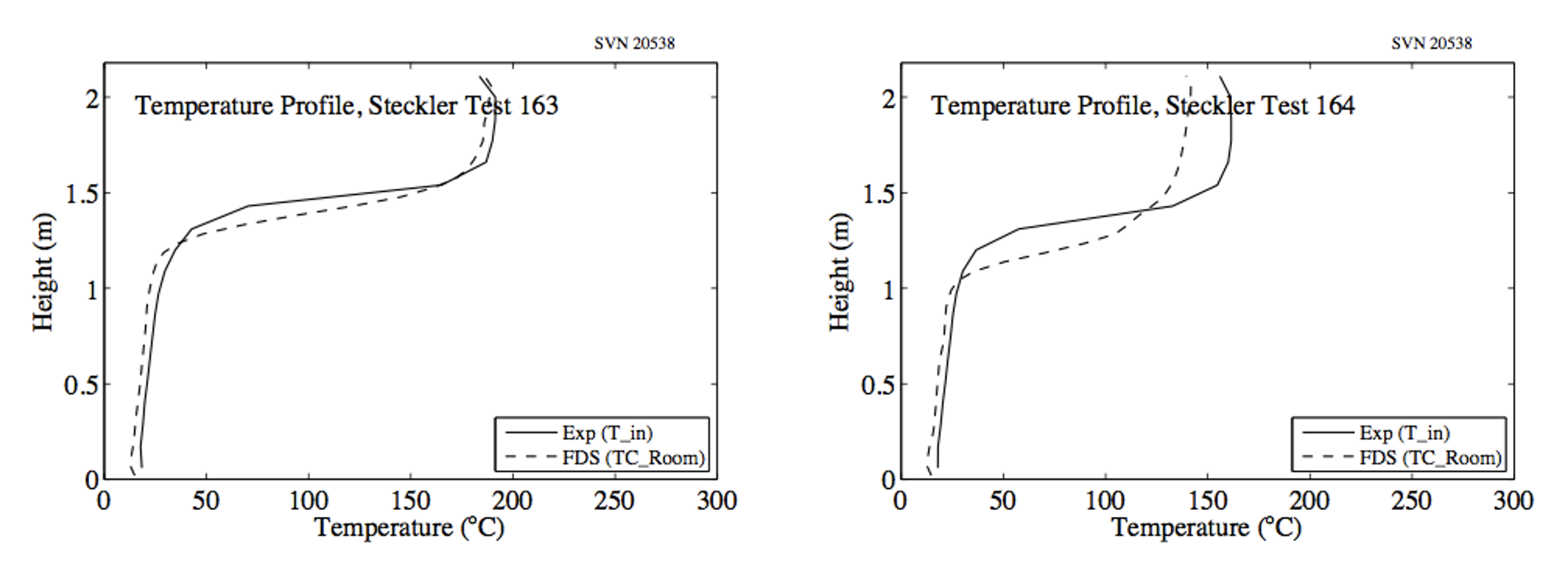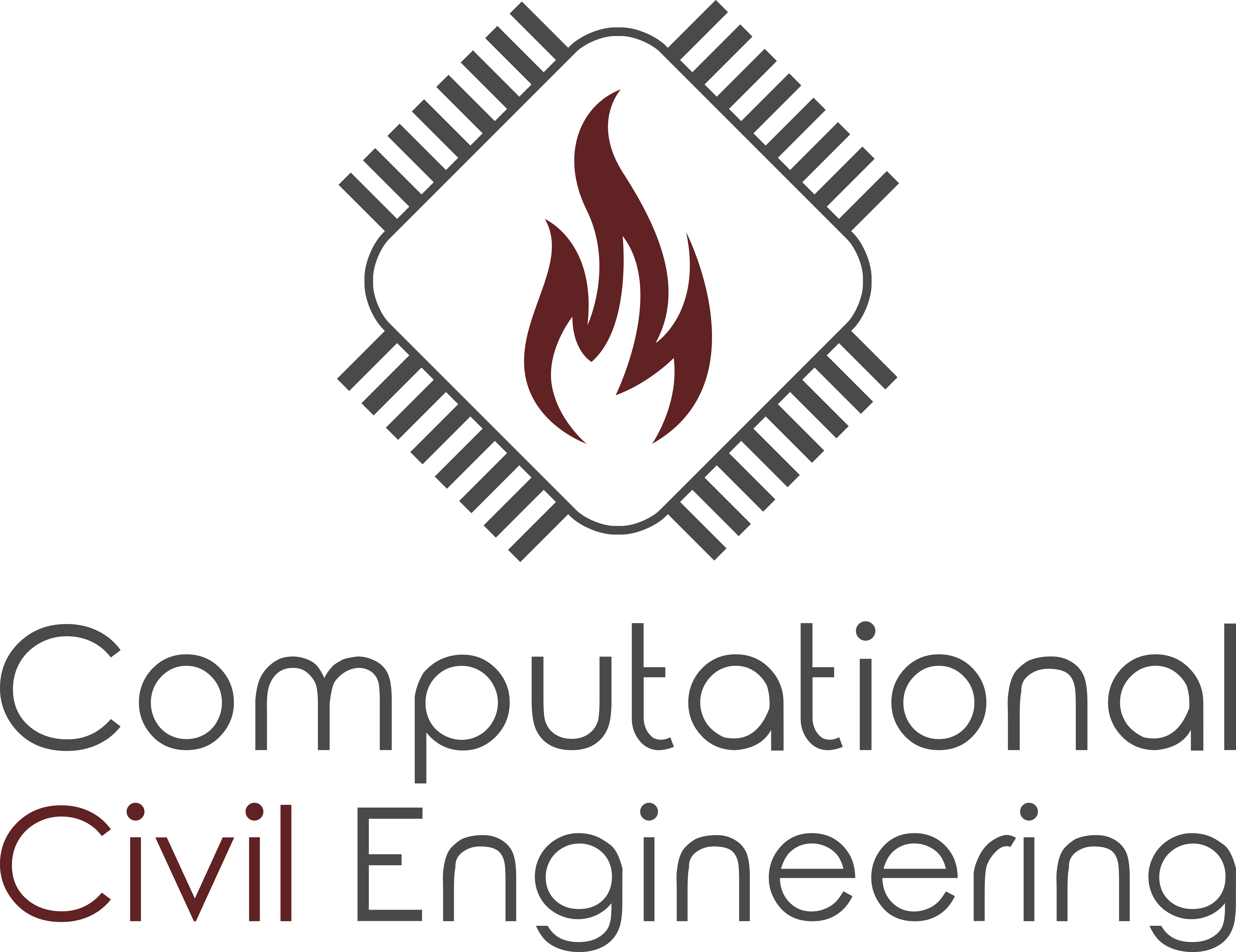FDS Overview#
FDS describes itself as:
The software described in this document, Fire Dynamics Simulator (FDS), is a computational fluid dynamics (CFD) model of fire-driven fluid flow. FDS solves numerically a form of the Navier-Stokes equations appropriate for low-speed (Ma < 0.3), thermally-driven flow with an emphasis on smoke and heat transport from fires.
– FDS User’s Guide
It is a widely used CFD software in fire safety science.
freely available and open source
runs on Linux / Windows / OSX
very well documented with accompanying verification and validation guides
Note
The lecture notes use FDS in version 6.7.5, so that specific information may not be valid for other version of FDS.
Please refer always to the documentation provided for your version of FDS. All documents can be found here: NIST/fds-smv.
Included models in FDS#
Fluid dynamics
adopted form of Navier-Stokes for low speed and thermally driven flows
emphasis on smoke and heat transport from fires
LES model, DNS possible
explicit predictor-corrector scheme, second order in time and space
Combustion
single step, mixing controlled chemical reaction
lumped species (air, fuel and products)
options for more complex reactions
Radiation transport
gray gas assumption, or wide band model possible
finite volume method with discrete angles (default 100)
absorption coefficients are based on a narrow band model (RadCal)
Geometry
rectilinear meshes, rectangular obstructions
complex geometries
Parallel Execution
multiple messes possible and needed for distributed computing
MPI and OpenMP parallel
Boundaries
thermal boundary conditions
burning behavior (pyrolysis)
heat conduction in obstructions
Governing equations#
Variable |
Quantity |
|---|---|
\(\mf \rho\) |
mass density |
\(\mf \textbf{u}\) |
velocity |
\(\mf Y_{\alpha}\) |
mass fraction of species \(\mf \alpha\) |
\(\mf \textbf{J}_{\alpha}\) |
diffusive mass flux of \(\mf \alpha\) |
\(\mf \dot{m}_{\alpha}'''\) |
reaction source term |
\(\mf T\) |
deviatoric stress tensor |
\(\mf g\) |
gravitational acceleration |
\(\mf h_s\) |
sensible enthalpy per unit mass |
\(\mf \dot{q}'''\) |
heat release per unit volume due to reaction |
\(\mf \dot{q}''\) |
heat flux (diffusion, conduction and radiation) |
\(\mf \bar{p}\) |
thermodynamic pressure |
\(\mf \overline{W}\) |
mixture molecular weight |
\(\mf T\) |
temperature |
\(\mf R\) |
ideal gas constant |
The momentum equation may be rewritten as
with the resolved kinetic energy per unit mass \(\mf K \equiv \frac{1}{2}\left|\textbf{u}\right|^2\). the Bernoulli intefral \(H\) obeys the following Poisson equation
One way to compute the divergence is given by differentiating the equation of state, which leads to
Numerical scheme#
update the density equation to obtain \(\rho^{n+1}\)
update the \(n_s - 1\) species equations to get \(Y^{n+1}_{\alpha}\)
Update the temperature from equation of state to obtain \(T^{n+1}\)
Compute \((\nabla \cdot \textbf{u})^{n+1}\)
Solve the Poisson equation for \(H^n\)
Use above pressure solution to update the velocity \(\textbf{u}^{n+1}\)
Combustion models#
single-step, mixing-controlled combustion, simple chemistry model,reaction is assumed to be of following form
\[ C_xH_yO_zN_v + \nu_{O_2} O_2 \rightarrow \nu_{H_2O} H_2O + \nu_{CO} CO + \nu_{s} soot + \nu_{N_2} N_2 \]comple stoichiometry
finite rate combustion
Ventilation#
supply and exhaust vents
heaters
HVAC systems
Fires and flows in the outdoors
FDS Guides#
The FDS guides and documentation for version 6.7.5 can be found in this release.
User’s Guide#
An about 400 pages thick manual to introduce users to FDS [MHF+20d]. It covers the user aspects of
basics of FDS, getting started
structure of FDS input files
building geometric models
fire and thermal boundary conditions
ventilation
combustion and radiation
particles and droplets
deices and control logic
output
Technical guide#
This document (about 175 pages) covers the technical / mathematical / scientific description of the FDS model [MHF+20a]. It includes a detailed description (or references) of the following aspects:
general overview of the FDS model
mass, species and enthalpy transport
momentum transport and pressure
combustion
thermal radiation
solid phase
Lagrangian particles
fire detection devices and HVAC
Verification and validation#
To demonstrate the applicability of the FDS model, there exist two documents (in total over 1000 pages) about model verification [MHF+20b] and validation [MHF+20c]. All test are run every night to check the impact of source code changes.

Fig. 11 Geometry and dimensions of the room.#
Smokeview - Visiualisation#
Smokeview (SMV) describes itsef as:
Smokeview is a scientific software tool designed for visualizing numerical predictions generated by fire models such as the Fire Dynamics Simulator (FDS).
– Smokeview User’s Guide
The manuals for Smokeview are located at the same page as the FDS documentation: NIST/fds-smv.

Fig. 12 Smokeview demo.#
Installation#
Source Code and Binary Download#
The full source code (both FDS and Smokeview) is available at GitHub. This page also includes references to:
binaries for Linux / Windows / OSX
all manuals
mailing lists
verification and validation data
The software can also be found here and be downloaded for installation: NIST/fds-smv.
Installation#
Please see chapter 2 (Getting Started) of [MHF+20d].
Execution#
Please see chapter 3 (Running FDS) of [MHF+20d] for details how to run FDS on varioius operating systems.
Options for Graphical User Interfaces#
Here two options for graphical interfaces to build FDS input files are mentioned.
A free and open source option is developed by Emanuele Gissi. It is called BlenderFDS and built as an addon to the free and open source 3D content creation suite Blender. Blender is a very powerful tool, aimed at 3d artists and different from CAD tools used in engineering disciplines. This can lead to a relatively steap learning curve.
A proprietary software, commonly used in the fire safety engineering industry, is PyroSim by Thunderhead Engineering.

